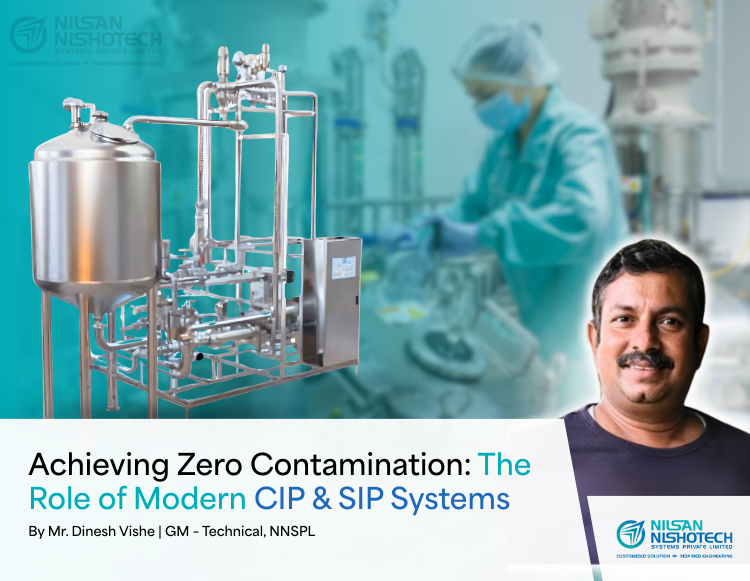-
-
W-199-E, MIDC Khairne, Thane Belapur Road, Navi Mumbai – 400705. India.
Achieving Zero Contamination: The Role of Modern CIP & SIP Systems

22 Sept 2025
In industries like pharmaceuticals, biotechnology, food, and beverage, contamination is not just a risk—it’s a threat to safety, compliance, and business survival. Regulatory bodies demand strict hygiene standards, and even the smallest lapse can trigger recalls, penalties, and reputational damage. To meet these rising demands, companies are adopting advanced Clean-in-Place (CIP) and Steam-in-Place (SIP) systems. These technologies are redefining how organizations achieve zero contamination goals while improving efficiency and operational reliability.
What Are CIP and SIP Systems?
CIP (Clean-in-Place) automates the cleaning of pipes, tanks, and process equipment without dismantling. Through controlled cycles of rinsing, washing, and sanitizing, CIP ensures repeatable and validated cleaning.
SIP (Steam-in-Place) follows with sterilization using pressurized steam, guaranteeing the removal of microorganisms. Together, CIP & SIP replace human-dependent cleaning with fully automated, consistent, and documented processes.
Why Zero Contamination Is Non-Negotiable
In highly regulated industries, contamination can lead to:
Agencies like FDA, EMA, and GMP regulators demand proven, validated systems that maintain zero contamination standards consistently. Automated CIP and SIP make this possible.
Benefits of Modern CIP & SIP Systems
How Today’s Systems Achieve Zero Contamination
Business Impact: Why Invest Now?
Build Customer Trust
Validated hygiene processes reassure both regulators and clients that safety and quality are non-negotiable.
Gain a Competitive Advantage
Early adopters of automated CIP & SIP systems set themselves apart. Hygiene becomes a marketable strength, strengthening brand positioning.
Conclusion
Achieving zero contamination is not just about meeting regulations—it’s about protecting your brand, ensuring safety, and driving growth. Automated CIP & SIP systems are more than cleaning technologies; they are strategic enablers of compliance, efficiency, and trust.
If your business is ready to embrace reliability and regulatory excellence, connect with us at info@nilsan-nishotech.com.

